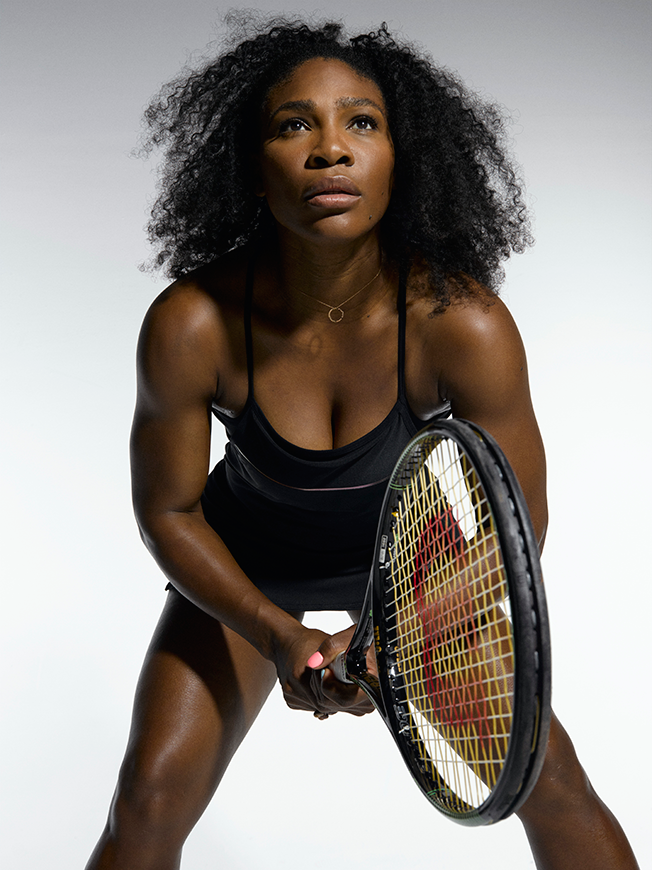Imagine you’re bodysurfing: and a wave is coming up. You start paddling for it. That wave (unknown to you) is a dumper. That’s right, you’re going wipeout, get stuck in the whitewater tumbling about, and gulping burning salty water down your throat (the price we all are willing to pay for the whooshing feeling of a ride).
You pop your head above the water, and you’re looking into the face of a second dumper. You dive down and grab onto the sandbar, but no matter how hard you hold, you get dumped again. You come up, spluttering, nauseous, and looking to the shore.
You can either choose to head back to shore, and lie on your warm towel and heat up, or stay and meet another set for a chance to get that soaring feeling when you catch a wave.
Beaches, Please
Now let’s imagine that the tech startup world is the first wave, and second dumper — the sports world. The bodysurfer? Just another ambitious female entrepreneur, looking for one hell of a ride. Each dumper alone is enough to want to get out of the water.
But two? That can easily make you second guess your holiday hobby, and perhaps gets you to opt for dusting the sand off your magazine, figuring out what colour goes best with your complexion, and wonder what it must be like to be a professional lifeguard instead (not all it’s glammed up to be, I can tell you that much from experience!). Let’s discuss the waves below, see what that means for us, and how we can help.
1st Wave: Gender Bias in Tech Startups
As we all know, gender bias in the workplace has lapped over into tech companies. And while we’re the ones who are creating the solutions of tomorrow, we’re applying those mainly to our products and often forgetting to apply this to our people.
I think gender bias in startups can be a blanket term (I should make a separate post about that), but for now, I let’s not lose sight of the bigger issue. We know that right now there’s a big gender bias towards men in tech.
2nd Wave: Gender Bias in the Sports Companies
The second wave focuses on gender bias against women in the workplace of sporting companies, not as athletes themselves (though so much could be said here too).
According to Women on Boards’ 2016 report, female representation on International Sports Federations has remained static at 18%. On top of this, according to Sporting Goods Intelligence study of Women & Sport (2014), 80% of all decisions at sporting companies are made by men.
“The cycles of poverty, discrimination, and sexism are much, much harder to break than the record for Grand Slam titles.” — Serena Williams
Only 3% of female leaders in sports and tech
This proves that both technology and sporting companies have a clear gender bias towards men. The odds are 17% for a woman to be founding her own startup, and 19% to be involved in management positions within sport. Using basic probability, it means that the chance to find a person who has management experience in both of these areas is a measly 3%.
Applying the challenge to sports tech
If we apply this fact that only 3% of leaders with experience in sports and tech are women, we can figure out just how hard it is for sports tech companies to appeal to high potential female colleagues.
This is a huge challenge. Let’s admit it, unpack it as a community, and figure out how we can tackle it.
The odds aren’t in our favor and we’re making matters worse
Look at the numbers above. The odds are plain-as-day not in our favour. They will never be in our favour if we don’t change tactics, and change the way that we approach this industry. This industry calls for special exceptions. And I’m putting my neck out and saying we should all be making them.
We at Tonsser (youth football app) get a fraction of female inbound applications compared to the ones from men. As a consequence our inbound talent pool is majority men. We then try to balance this out when we manually source candidates for jobs. Even here we still stumble and still come out with mainly men running through our interview processes.
To me, this says one thing: we’re not making it easy for women. First, we’re asking them to apply to a startup job (already the odds are against us). We’re then asking us to consider not just a startup but also one dealing with sport. Our job ads currently drip of football, and though we receive many applications, the amount from women is basically negligible. I think it’s because we’re just not trying hard enough to address a very clear problem.
So we as a community should all carry the blame squarely on our shoulders, but that also means that we’re all the potential mavericks. Let’s operate under the premise that we all want to hire the best talent there is out there. The standard is high — and it should be — but the qualities we demand for this standard (sometime with complete bias) are now up for debate. I’m going to challenge them below, and see if we’re limiting ourselves to experience amazing and diverse female entrepreneurs just because we’re not speaking their language.
1. Job description: make it more visionary, with a smaller focus on product
Sure, you’re a tech company and live for your products, but you have to tempt female applicants in who might not live for those products, or even truly understand them at face value. If we truly want to change this industry we should all move away from boasting about the “fun lifestyle we get” that relates to our product, and focus more on the bigger picture.
We know that sport is like candy to babies (or job-seekers) but let’s think about who we’re attracting. If we keep using sport as leverage, we might fall risk to excluding women who just aren’t interested in that part of our product. We need to be bold, and trust that by opening our horizons, we’ll receive more (and better) applications, and not less. That’s not to say women aren’t interested in sport, it’s rather to say that this might not attract majority of the high potential female job-seekers.
Eg. too product heavy:
Tonsser is a social network and the leading app for youth football players in Europe, empowering the next generation of football players to perform, improve, and get discovered.
Eg. vision heavy:
Being an engineer at Tonsser is not just about architecting and building great software. It’s also about using those technical skills to put a dent in the world. We believe we’re doing exactly that with our leading app for football players — the first step of our mission to disrupt an industry ???
Takeaway: be careful not to exclude people based on passions some people at the company share, that happens to link up to the product.
2. Don’t speak in niche company jargon
Remember that you’re used to your company, but your new recruit isn’t. Don’t make anyone feel out of their depths by using company jargon that might not be understood by an outsider or someone who doesn’t have a personal interest in the field. You could lose her interests, and with it, her application.
Takeaway: use inclusive language, avoid unnecessary exclusion of candidates.
3. Choose a range of benefits: those that relate to your sport as well as those that don’t
Just because you love your sport, doesn’t mean the whole team will. It’s very “on-brand” to go to certain events and to give out certain benefits on par with the company, but remember to keep it broad. I know that we as a team play paddle tennis, and have been known to dress up on occasion. We also go on outings that suit the team dynamic at that stage — yoga on SUPs is definitely not out of the equation. Though, true to brand, you’ll always find a FIFA game set up in the corner at an office party. Be on brand, but consider that you have a mix of people in your team.
Takeaway: make sure that benefits are widely accessible to all of your colleagues.
4. Not mandatory: specific sport-related experience
Be very honest with yourself: what experience is make or break for this role. For example, if you’re looking for a marketing manager for a football brand, I’d put “prior experience as a footballer”and “worked for similar company” in a nice-to-have box, definitely not a deal-breaker one. You’re looking for someone who can outperform the role. Role-related experience, potential, cultural fit, and team dynamic are way more important metrics than something as simple as understand the complexities around your targeted sport.
And smart people, I’ve come to realise, can adapt to almost anything, almost immediately.
Takeaway: don’t over-estimate the importance of passion for the product. It’s passion for the company, the role, or the team you’re looking for.
5. Source: as objectively as possible
If you’re looking to top up your candidate pool with excellent candidates: then this is the part where you can start to include diversity as part of the consideration. Figure out what gender gap you have, and make sure your sourcing is skewed towards finding the balance between the two.
6. Read up: about the realities of women in business
Spend some time educating yourselves: men, women, office dogs, you name it. The more people who can empathize with what it’s like to be a woman in business, the more people can thrive in this role. Got a bro culture? Cut out any women jokes, or anything below the belt. Not a feminist? Time to find out why you shouldn’t flinch at that word anymore.
If you don’t know who Sheryl Sandberg is, now’s the time to start googling. While you’re there check out pay gap, women in meetings, and feedback to female colleagues. You can do this, but you’ll need to get strong women to feel accepted. ??
Summing it up
Women in sports tech bring so much more than they’re worth, but we’ve got to put some work in to get them. These are applications that currently will just not write themselves. Let’s stop making excuses that women “are just not interested” in joining our teams, and instead ask the more pressing questions why not, and how can our process change that?
I hope to see more and more strong women joining sports tech: I for one will stand up for the impact that Tonsser brings in this space.
About the Author
Jessie Scheepers is a South African based in Copenhagen. She has worked across IMA and Northern Europe, and has developed a passion for spotting potential, regardless of culture. She’s now heading up people and ops in a male-dominated sports tech startup. She’s trying to change the status quo, one person at a time, in one of the more conservative markets (and industries) in the world.








